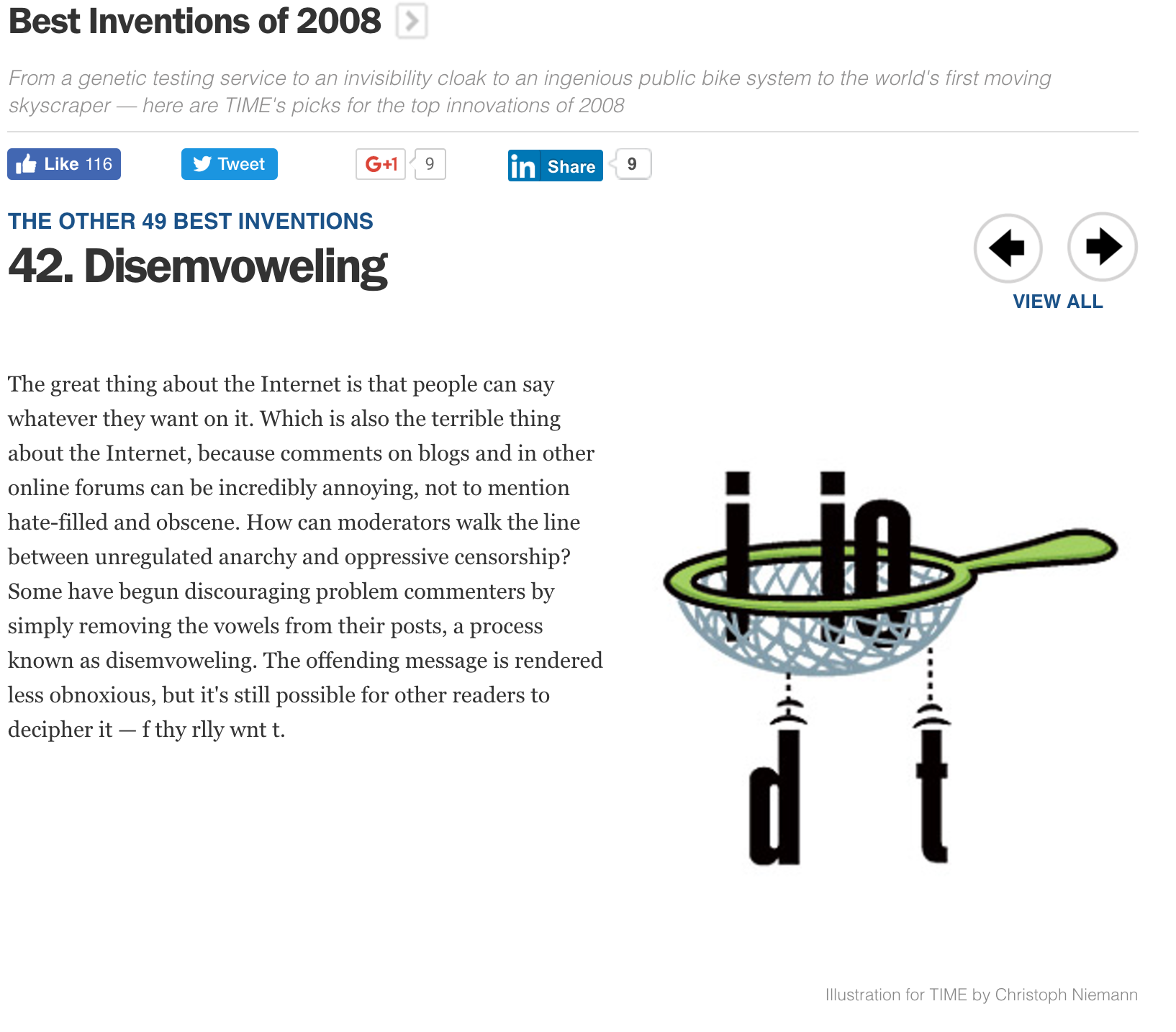Concepts
Disemvoweling

CAPTCHA
Began as a way of reading books, but bots soon excelled.

Began as a way of reading books, but bots soon excelled.
behavior which occurs when an individual perceives threat or anticipates threat in the group. (Gibb 1961, p. 141)
spends energy defending themselves rather than focusing on the common task; often reciprocated
… defensive recipients distort what they receive. As [he becomes] more defensive, he becomes less and less able to perceive accurately the motives, the values, and the emotions of the sender. (Gibb 1961, p. 142)
| (Gibb 1961) | Wikipedia |
|---|---|
| non-judgmental description | editing under the influence |
| problem orientation | spirit vs rule of policy |
| spontaneity | writing for the enemy |
| empathy | assume the assumption of good faith |
| equality | be nice |
| provisionalism | WikiLove |
Wikipedia:
namespace) (remember search tips)